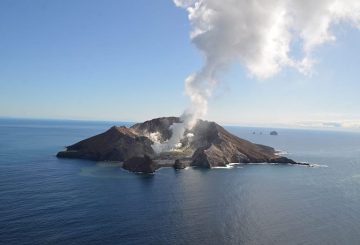Những người được tiêm chủng đầy đủ hoặc một phần ở New Zealand sẽ vẫn phải tuân theo các quy tắc Cấp độ 4 sau khi một trường hợp cộng đồng mới được phát hiện.
Hiện tại, các nhà khoa học vẫn đang cố gắng xác định mức độ dễ lây lan của Delta là bao nhiêu, nhưng hướng dẫn sơ bộ cho thấy nó có thể lây nhiễm nhiều hơn tới 90%.
Chỉ trong hôm nay, có thông tin tiết lộ rằng biến thể Delta của Covid-19 đã được truyền nhiễm khi các cánh cửa đồng thời mở chỉ trong vài giây tại một cơ sở kiểm dịch.
Trên toàn cầu, cả Tổ chức Y tế Thế giới, Trung tâm Kiểm soát và Phòng ngừa Dịch bệnh Hoa Kỳ đã thay đổi hướng dẫn của họ về việc mang khẩu trang khi bệnh Delta lan rộng.
CDC cũng đã khuyến cáo rằng bệnh Delta có thể lây lan trong số những người được tiêm chủng.
Tổ chức Y tế Thế giới khuyến cáo tại một cuộc họp báo ngày 25 tháng 6 rằng những người được tiêm chủng đầy đủ nên tiếp tục đeo khẩu trang và thực hành các biện pháp an toàn khác.
“Mọi người cần phải tiếp tục sử dụng khẩu trang, ở trong không gian thông thoáng gió, rửa tay tay, nghi thức hô hấp, khoảng cách thân thiện, tránh đông đúc”, Tiến sĩ Mariangela Simao, quan chức của WHO, nói với các phóng viên.
“Những gì chúng tôi đang nói là một khi bạn đã được tiêm chủng đầy đủ, hãy tiếp tục bảo vệ toàn vì bạn có thể kết thúc như một phần của chuỗi truyền bệnh”, Tiến sĩ Bruce Aylward nói tại cuộc họp báo đó. “Bạn có thể không thực sự được bảo vệ đầy đủ.”
CDC cập nhật hướng dẫn của họ 27 Tháng Bảy khuyến cáo rằng ngay cả những người được chủng ngừa đầy đủ nên mang khẩu trang trong hầu hết các môi trường trong nhà công cộng.
“Bằng chứng sơ bộ cho thấy những người được chủng ngừa đầy đủ những người bị nhiễm biến thể Delta có thể lây lan virus cho người khác,” CDC lưu ý trong lời khuyên đó.




























































